You can be called a coffee fan if you don't turn your home into a coffee shop?
This article is from the official account one Night Aesthetics (yiyemeixue)
For many people, the first thing to do when getting up early is to drink coffee. Coffee is more sober than chicken soup, and no chicken soup is quieter. Love coffee to a certain extent, you should want to be inseparable from coffee all the time.
Today, Pen magazine tells us the story of several coffee fans who love coffee so much that they even transform their living room into a coffee shop, immerse themselves in the aroma of coffee at any time, and even turn themselves into professional baristas.
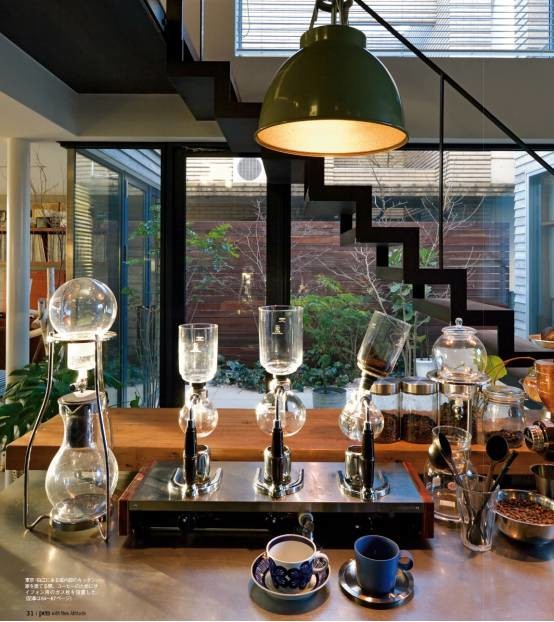
How on earth do they expose themselves to coffee at zero distance? We might as well take a look at life with coffee in these houses!
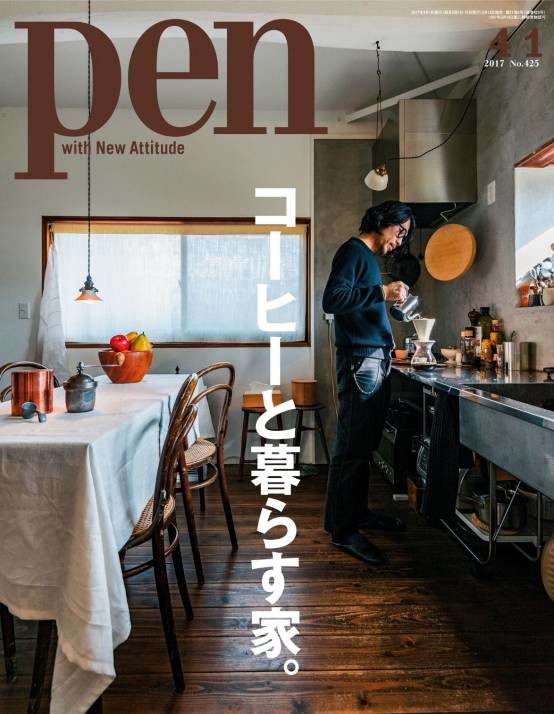
I.
Kameya Jingzhi Kameya Qianqing
No shop door-to-door coffee owner of "Capime Coffee"
The owner of the "tortoise" shop of the coffee bean royal ferry.
Yamaguchi City, Yamaguchi County
Coffee Aesthetics created by props and Space
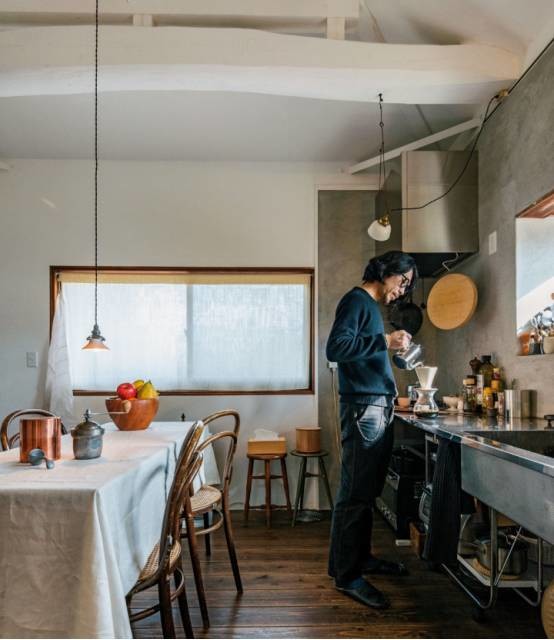
Some people drink coffee with large mugs, while others use exquisite porcelain cups, imagining different utensils used by different people, and their distinct lifestyles seem to unfold in front of their eyes.
In Yamaguchi, Japan, there is a unique coffee shop called Capime Coffee. This coffee shop has no physical shop, door-to-door service and provides "business trip coffee". The owner of the shop is a couple, husband Kameya Jingzhi and wife Qianqing. The coffee cups they use, strictly speaking, should be called coffee bowls. They come from Brazil and are commonly used by local people when drinking milk coffee. However, the coffee bowls used by the two men are different. It is the special work of Shiro Hamanaka, the craftsman of the roasted big house kiln. The shape of a big tea bowl should be held in both hands when drinking. While feeling the lines and temperature of the utensils, they put mellow coffee into their mouth, plus a piece of sheep soup, which is the coffee style advocated by the couple.
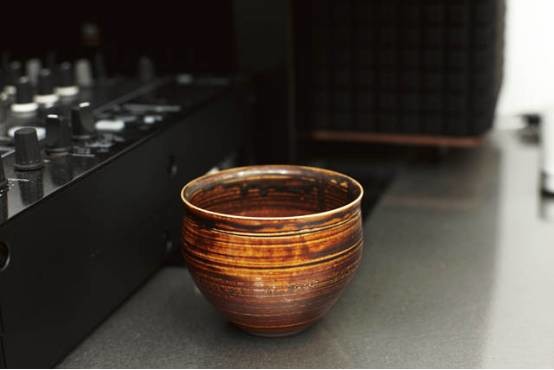
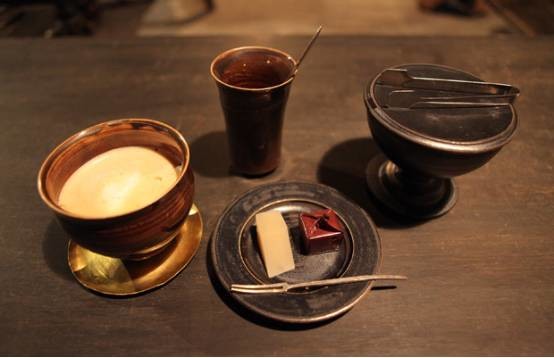
This way of drinking is completely different from holding a paper cup of coffee while drinking. Holding a large bowl of coffee makes the coffee particularly fragrant and deep. Male host Jing Zhi said, "because I like the bitter aroma of coffee, I prefer deep-fried coffee." I like to make coffee that can be tasted slowly and still tastes good even if it is cold. I would like to have a cup of coffee that is not strong enough to taste, which is really a good match. "
Their home is transformed into a Japanese-style house, which in fact has a variety of functions such as a coffee bean baking shop and a coffee bean store. "rather than a new house, I would like to transform the old one and move in again." So the two men began to search and found a family that had no use for nails and was built entirely in the ancient way, and moved in five years ago.
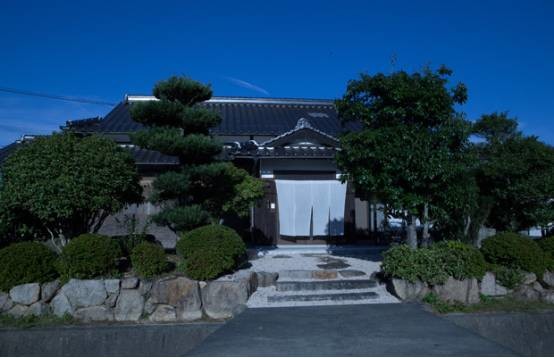
The appearance is an ancient house, and the quiet and indifferent white and warm curtain is full of the flavor of traditional Japanese families. After entering the house, the white Western-style decoration of the living room, dining room and elevated frame seems to be another world. This is the result of three months of painting and renovation of the walls and ceilings.
The space imitates the style of the monastery, every corner is painstakingly painted, and the air inside seems to be particularly clear.
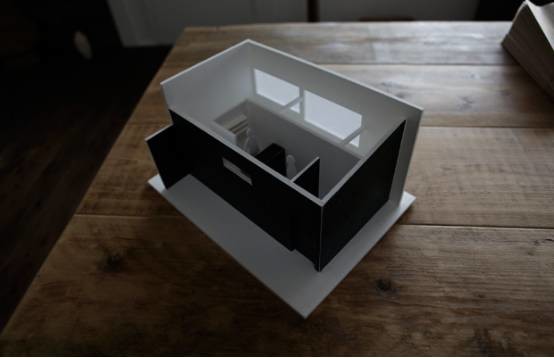
In one part of the room, there is a shelf showing coffee utensils from a research institute in France. The wooden chair on one side has a beautiful curve and is a valuable handmade work under the brand Thonet, which is called the origin of coffee chair and the inventor of furniture curve technology. The self-made lighting made by her husband Jingzhi can be embedded with the antique switch, which looks like a good match for the interior style full of ancient furniture.
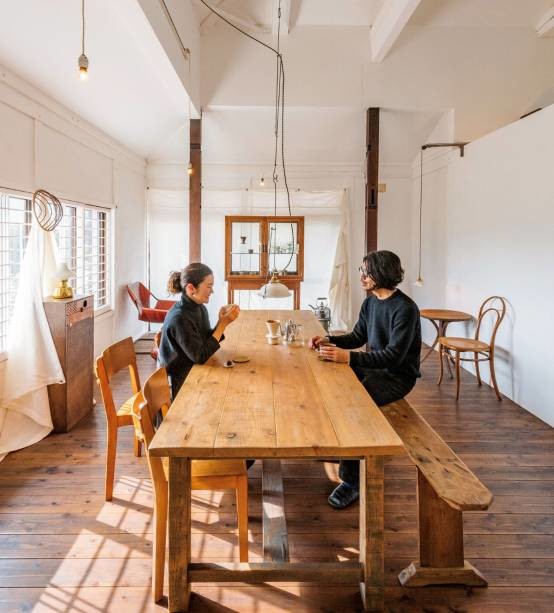
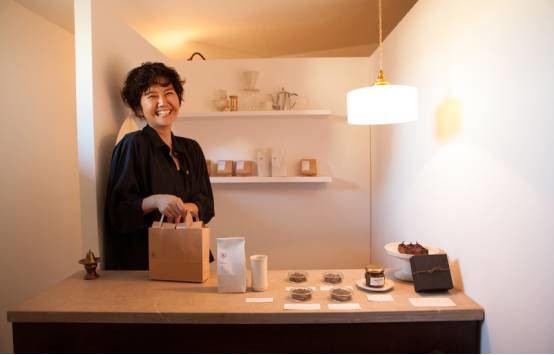
The things in this room are carefully selected and made in order to match their preferences and lives. "I had all the furniture I should have when I got married, and I didn't need to bring it." The wife said, "Home is the place of free expression."
Their home was also used as an open exhibition hall to display clothes and appliances, as well as the venue for guest shows, and the shelves used for door-to-door service served as a bar at the event, of course, at the end of the event with a cup of coffee.
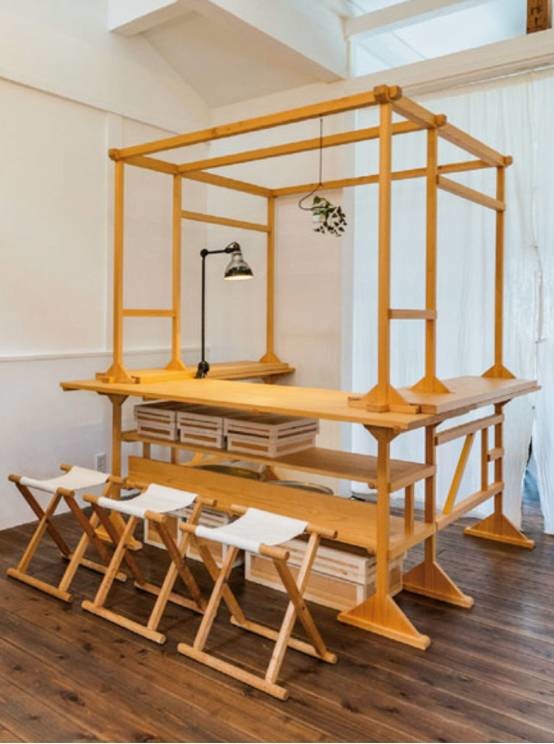
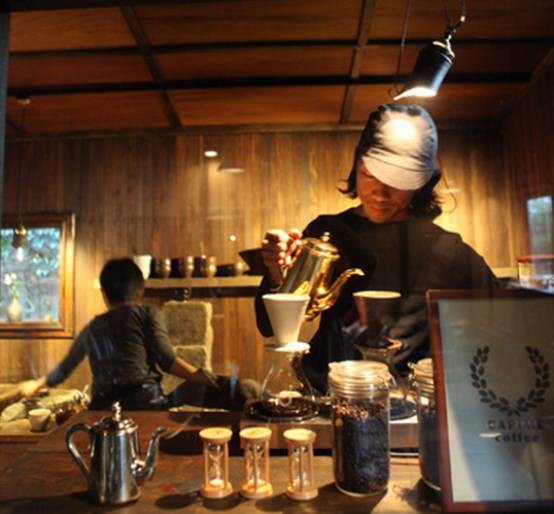
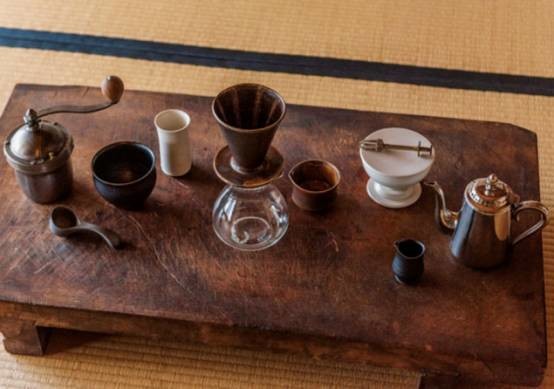
The home is the most calming space for her husband Jingzhi. If you want to drink coffee in the quietest space, what the store needs to provide is not a coffee shop, but coffee beans and tools. This is why he opened this unique door-to-door coffee shop. "what's interesting about coffee is that it takes time and effort. Unlike black tea and Japanese tea, we should start with grinding beans. Many people who like coffee also like to make coffee props. With the coffee props and space you like, you can enjoy the coffee. "
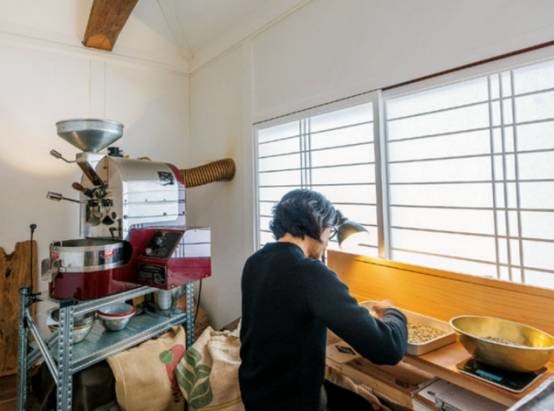
II.
Yoshida Keichi Yoshida
Owner of "WIFE & HUSBAND"
The capital city
A family tale woven with coffee beans
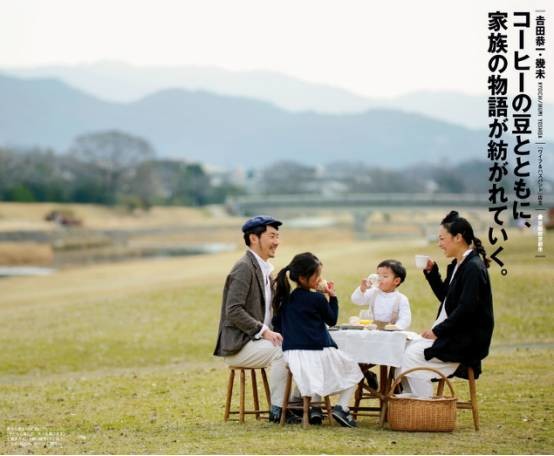
On a clear sky, by the bank of Yachuan, young men running, wives walking dogs, and children playing passing games were surrounded by ancient wooden tables and chairs covered with plaid tablecloths, the coffee on which was made from coffee beans fried by the owner himself, and the handmade English muffins on one side were hot, making people want to take a bite. The scene in front of us can be said to constitute a classic picture of spring picnics. The protagonist in the picture is the Yoshida family.
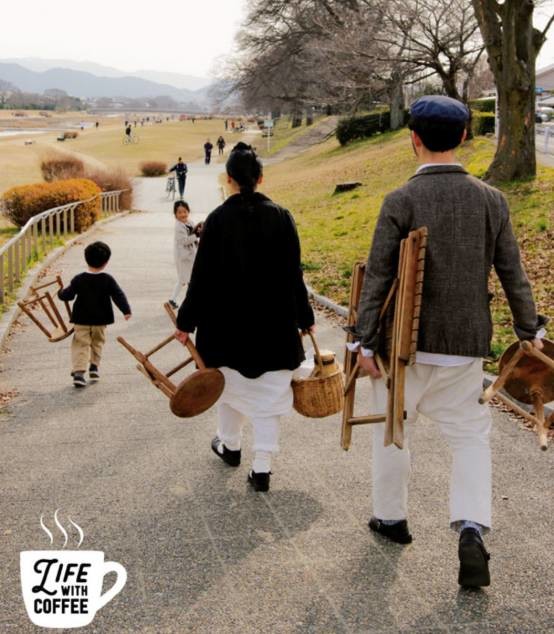
Yoshida's home, in an alley a minute's walk from Yachuan, is an old house where the family moved six years ago. "We used to live in an old house near Yachuan. The eldest daughter likes to play by the river, so she still moves near Yachuan. When we saw this house when we were looking for a house, my husband and I decided immediately when we took the first step. " The wife hardly began to talk.
Stepping into the porch is an unpaved mud space. The old owner once used it as a Kanto cooking shop, and the cabin at the door still had the counter that was placed at that time. Before getting married, the two had worked in two different black tea shops, and it was their dream to open a small shop of their own one day. And the layout of the house happened to coincide with their dream blueprint, and was decided by them at the first time.
On the bank of Yachuan is the second restaurant of the Yoshida family. Picnics in Yachuan are the daily scenery of the family, and the coast of Yachuan is a special table for them to enjoy coffee. In my own home, the mud house and the extended 6-inch Japanese die (6 "equivalent to about 10 square meters), the kitchen and the three bedrooms on the second floor are decorated with old tools that can be seen everywhere. The room also smelled of nostalgia.
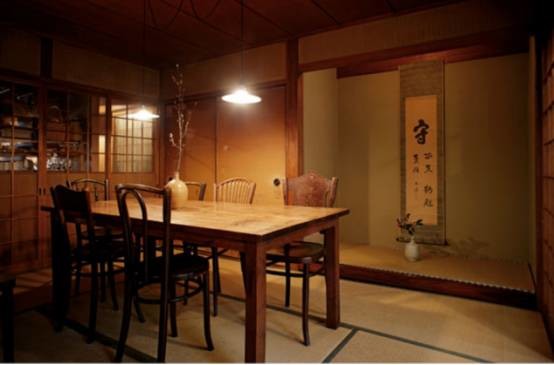
The mud house was converted by the two into their own roasting coffee shop, named "WIFE & HUSBAND", which opened last summer. The interior space decorated with old wooden tables and chairs, lamps, photo frames and dried flowers is said to have barely changed except for the addition of some necessary equipment for coffee shops and the installation of small windows.
"in fact, this small mud house is also used by us as a private space, and the so-called shop is more like a space to open up the private sector." Husband Yoshida told us. Indeed, when I stepped into the store, I really had the feeling of visiting Yoshida's house, as if I had entered the world of Mr. and Mrs. Yoshida. With their favorite flavors of coffee, biscuits, coffee pots and mugs, everything in the store is more like the Yoshida family sharing their lifestyle and picnic menu with guests.
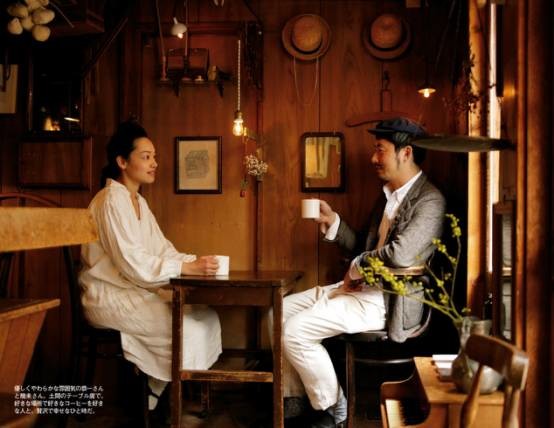
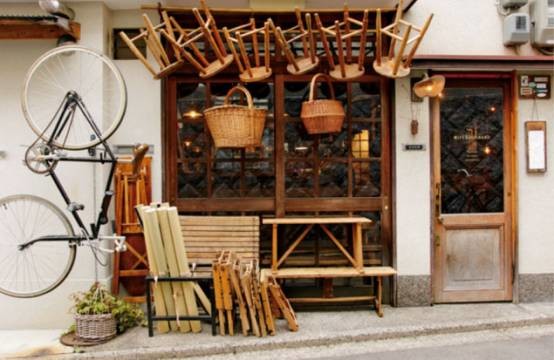
"originally, drinking coffee every morning and evening is my interest. Coffee is different from black tea. The fun lies in making it. You can make your own flavor with fresh beans, which is the greatest charm." The husband, who used to work in a black tea store, explained why he loved coffee. Husband and wife are self-taught everything about coffee. But after all, there is an understanding of black tea, from deep-roasting to extracting the ideal taste, the two are good at it.
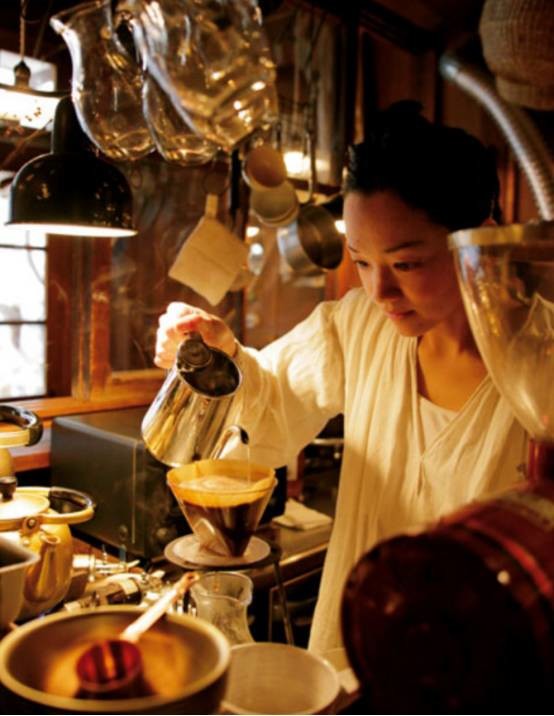
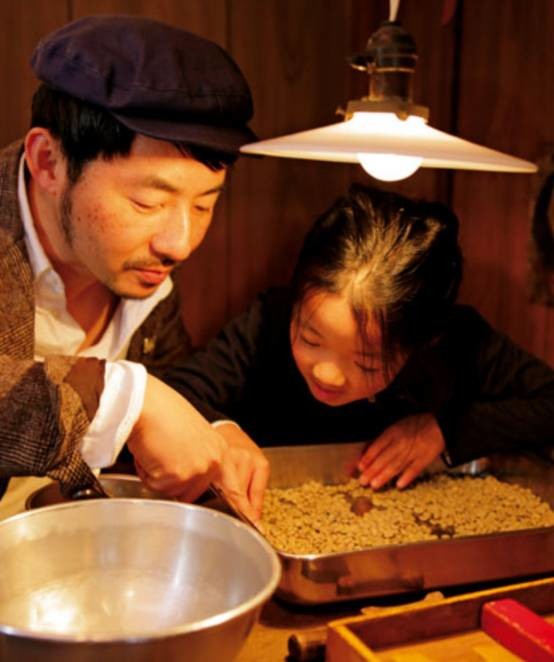
3.
Horiuchi Keiwa Horiuchi
The head of the architecture firm
Yoshie City, Tokyo
A coffee kitchen full of siphon pots
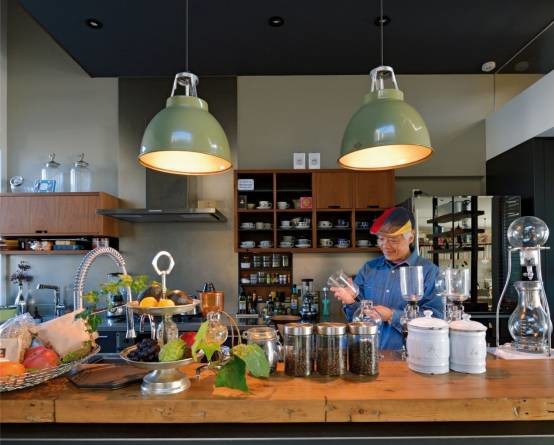
Looking out from the home of Guihe Horiuchi and his wife Snow Hori, you can see the nearby Tama River. The designer of this home is his wife Snow Hori. The three-story building, built two years ago, is a well-lit and airy room that is both their home and their place of work, the architecture firm studio CY.
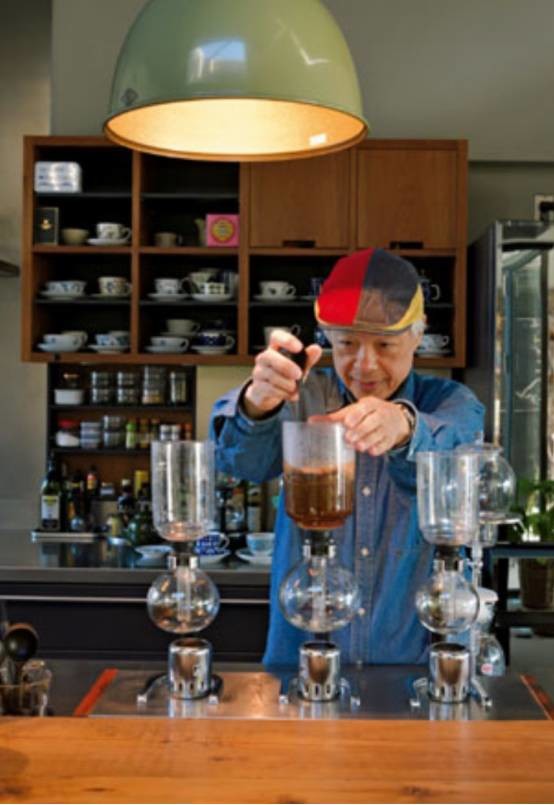
The first floor is the restaurant, you can wear shoes to enter, but also the reception of guests and negotiations of the office. My husband's favorite groceries are placed near the antique table, which looks like good taste. Classical or jazz music flowed slowly from the 1959 audio equipment bought at auction in Britain, and books in fields such as fishing and design were lined against the wall. Sitting in the living room, the green plants outside the window came into view, the sun was just right, and on one side, the fragrance of expensive and soaked coffee also floated in.
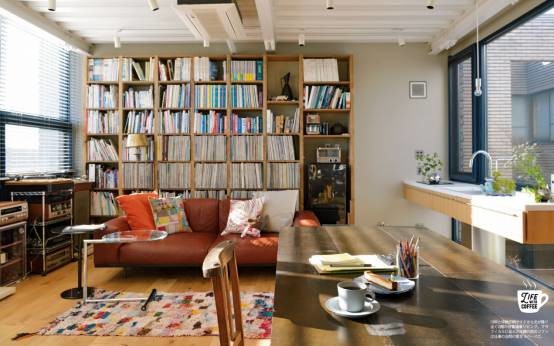
Sitting in this family restaurant, there seems to be an illusion of coming to the coffee shop.
"whether in the bedroom on the third floor or in the studio on the second floor, the smell of coffee is always reminiscent of her husband's intentions. After hard work, there is nothing like enjoying coffee in a restaurant on the ground floor. " His wife Snow Horiuchi said. Although the house has three floors, each floor is clearly divided into functions, but after all, it is the space under the same roof, so it is not easy to completely separate private life from work. A cup of coffee after work seems to be a switch, turning off work and turning on private life mode.
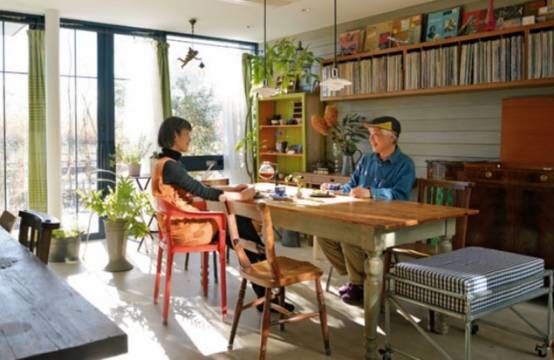
Her husband Guihe, who used to work in a publishing house, is now in charge of the operation of the architecture firm. His day began with the frying of coffee beans. "in winter, beans are also cold. They have to be dry-fried in a frying pan before they can be put into the baking machine. Coffee beans are like rice. If you touch them, you can tell the oil and moisture in them. The temperature and time of baking should be adjusted according to the state of the beans. The moment when I drain the excess water from the beans and let them change into a fragrance is what makes my heart beat the most. "
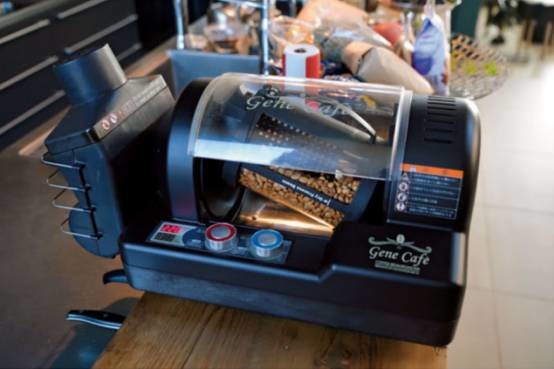
The coffee machine in the room can be set to automatically adjust the temperature and time, and the state of coffee beans in the inner tank can be seen from the glass shell, even for beginners. "at first, if you want to know the taste of beans, you can drink the original taste of the material by frying it shallowly. Later, he gradually mixed different beans together to make the flavor he liked. I'm always trying to change ways. "
"Home Cafe" for Guihe, the greatest pleasure is to meet his demand for "fine-tuning". For example, when the weather is warm, carry the table out and immediately create a new coffee space. If you want to appreciate the antique furnishings and designs at home in a different direction, you are also free.
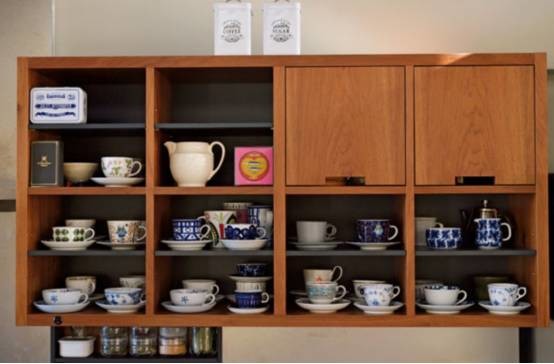
But the most remarkable thing in this room is the siphon pot in the kitchen. Spherical and cylindrical glassware are arranged in rows, and they are beautiful enough as unique interior furnishings. Guihe actually tried to use all kinds of props, and why he ended up using a siphon pot should start with an old coffee shop where he had been to. "my friend is the owner of an old coffee shop. Once I saw him making coffee in a siphon pot. I thought it was very interesting. I wanted to give it a try, so I asked him to teach me."
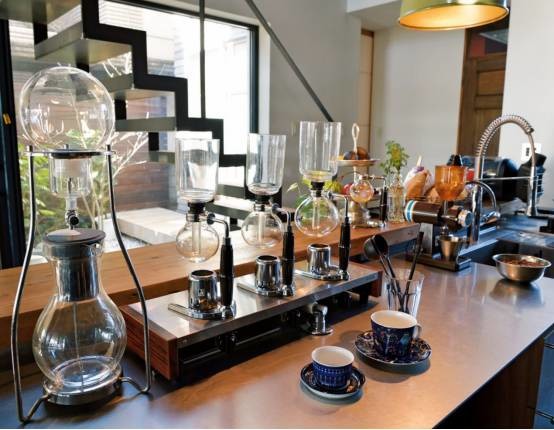
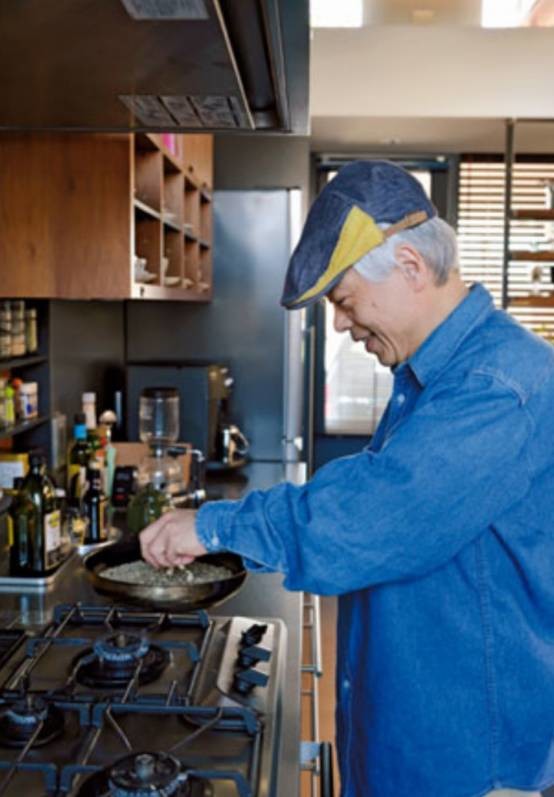
In the design of their own housing, in order to use the kitchen as a coffee shop in the future, but also barrier-free use of siphon pots, the construction of the early installation of gas plugs in the kitchen. The fried coffee beans are still fragrant, ground in a grinder and thrown into a siphon pot. The boiling hot water rises and the amber liquid fills the glass container.
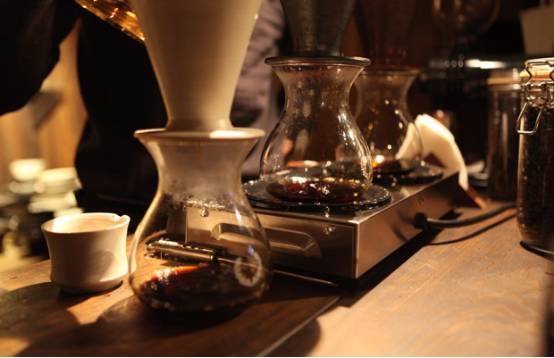
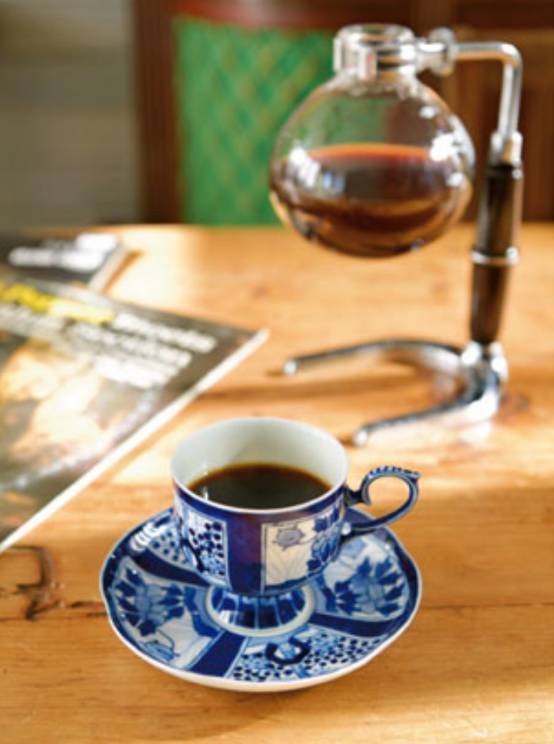
Guihe used to be an editor, met with people, and visited countless coffee shops. "when you go to a coffee shop or a teahouse, you still want the atmosphere. For example, college students go there in order to experience the atmosphere. After entering social work, I went there for a change of environment and talked in a relaxed atmosphere. "
Recently, Guihe got some rare and valuable coffee beans from Laos and China from his coffee fan friends. He lamented, "the changes of beans are so different because of different origin and variety." The more you know about the world of coffee, the more you find that you still have a lot to learn. " Presumably, Guihe, who is so obsessed with coffee, is not far away from becoming a coffee master.
Important Notice :
前街咖啡 FrontStreet Coffee has moved to new addredd:
FrontStreet Coffee Address: 315,Donghua East Road,GuangZhou
Tel:020 38364473
- Prev

Starbucks supports veterans and military dependents to open military family stores.
Starbucks, a coffee shop chain, has launched a program to hire veterans and military dependents since 2013, hoping to provide jobs for veterans and military dependents, and the plan has so far yielded tangible results. (photo / taken from the Internet) at that time, Starbucks expected to complete its goal of hiring 10,000 veterans and military dependents in 2018, but it had already achieved it in March this year, so Starbucks announced a new program.
- Next
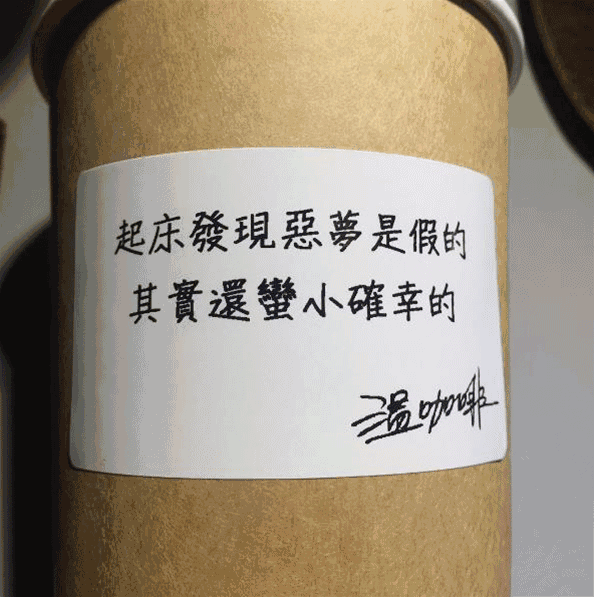
There is a cafe run by Duan Zishou in Taipei, where a daily coffee quotation warms the heart.
Warm Coffee CTI cafetour Vol.19 has a cafe owner who always leaves a sentence full of temperature on his daily take-out cup. I hope everyone who comes to the store can get spiritual strength while tasting the coffee. It is precisely because of such a willingness to share and listen that guests often come to the store to consult him and seek some life answers. Small
Related
- What documents do you need to go through to open a coffee shop? coffee shop coffee shop certificate processing process
- How to purchase Coffee beans in small Cafe how to choose a suitable supplier for domestic Coffee supply Company
- How to drink Starbucks Fragrance White Coffee? how to make Australian White Coffee? what Italian coffee beans are recommended?
- The Story of Flora Coffee: the name of Flora Coffee Bean and the implication of the Flowers on Florna Coffee
- How much does a cup of coffee cost? How much is the profit of a cup of coffee? What is the profit of the coffee shop in a year?
- Yunnan small Coffee, known as "fragrant Coffee", introduces the characteristics of Alpine Arabica Coffee producing areas in Yunnan, China
- 2023 latest Starbucks full menu price list how much is a cup of Starbucks coffee what is better to drink the most popular hot and cold drinks recommended
- Starbucks different kinds of Coffee Price list Starbucks menu 2023 Top Ten Best drinks in Starbucks
- Starbucks Spring praise Comprehensive matching Coffee Bean theme Story Packaging implication and taste description
- The cost of a cup of coffee latte American coffee cost price and selling price

